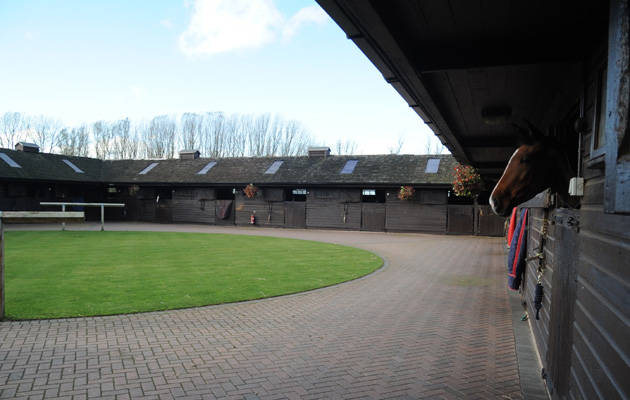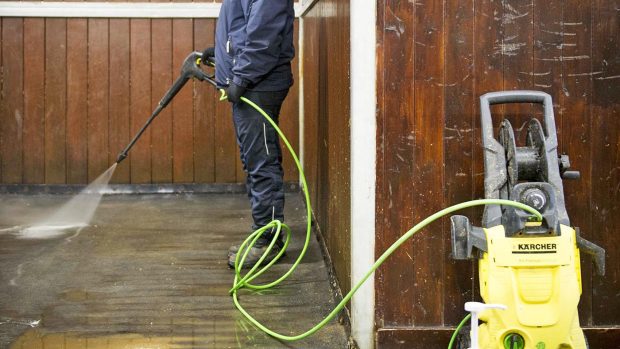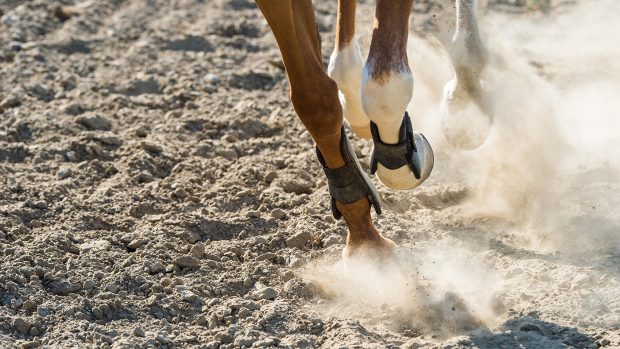Whether you’ve just got a new horse or are moving to new stables, knowing how to settle a horse into a new yard is key to make the move as stress free as possible for both horse and owner.
“The key to introducing any horse to a new yard is to be organised,” says the British Horse Society’s head of welfare, Gemma Stanford. “If the horse is new to you, do a risk assessment of the horse before it arrives, including where the horse is coming from, when was it last wormed, is it up to date with vaccinations and where is the horse’s passport?”
New horse checklist
1. Is the horse’s passport up to date? Ensure that the current owner’s details are on the passport before purchasing the horse as it can be a nightmare chasing previous owners. Also check that the animal’s equine vaccinations are up to date.
2. If the horse is microchipped, get the details transferred into the new owner’s name.
3. Preparation is key so grooming kits and stables should be fully disinfected prior to the horse arriving. There should be kit that is used solely on the new horse (see more about isolation procedures below). Many yards now ask for horses to be tested for strangles prior to arrival.
4. When the horse arrives, perform a health check, such as general outlook, skin and hoof condition, droppings, behaviour etc. It’s also worth taking the horse’s resting pulse, respirations and temperature to check against should the horse fall ill.
5. Perform a faecal egg count and worm accordingly. You can also do a saliva test for tapeworms. Some yards prefer to keep horses in for a period after worming to avoid paddock contamination.
6. Integrate the horse slowly after the isolation period, for example, move the horse onto a yard or in a stable close to horses that he’ll eventually be turned out with so that he can become acquainted across the yard. Turn him out with one horse initially, and then integrate him with others gradually. Always be on hand when turning out for the first time in case of an incident.
7. Register the horse with a vet, farrier and dentist as soon as possible. It’s very important that you keep these details easily accessible so that the relevant person can be contacted in the event of an emergency. It’s also advisable to note down a brief veterinary history of the horse, for example if he has had colic surgery in the past, or is prone to tying up or allergic to any medication. Also, what you’d like to happen to your horse in an emergency such as a case of colic if you are unavailable. Make clear your wishes.
8. Keep important paperwork such as passports in a safe place on the yard where the horse is kept, such as a locked safe.
9. Make a note of when the horse last had the dentist, farrier and vaccinations and when they are next due.
Isolating new arrivals
Hannah Westen, campaigns officer for research and education at World Horse Welfare, explains the importance of isolation when bringing a new horse on to a stable yard.
“The aim of isolation is to protect other horses from becoming infected if a horse is suspected of having a disease, or if its health status is unknown,” says Hannah.
“Horses can sometimes be infected with a disease without showing any obvious signs, particularly in the early stages, so isolation allows time for clinical signs to develop, and for the outcome of diagnostic tests to be known.
“As a general rule, new arrivals should be isolated for at least three weeks. Ideally the horse should be able to see other animals but not come into direct contact with them. This includes separate air space, which means keeping them out of the range of droplets that may pass through the air when a horse snorts or coughs.
“Use separate equipment for each new horse including water and feed buckets, haynets, mucking out equipment and grooming brushes.
“In an ideal world one person would care for this horse as diseases can be spread on infected clothing and hands. If that isn’t possible, remove your overalls, wash your hands and clean and disinfect your boots before handling other horses.
“Be extra vigilant with horses from outside the UK because they may be carriers of diseases not currently found in this country. Such diseases may take longer to diagnose due to their unfamiliarity and may infect more horses due to a lack of immunity in the horse population.”
Help your horse to settle in
These useful tips from the Blue Cross are designed to help your horse settle into his new environment.
- Prepare the area that the horse will go into prior to arrival – so if you plan to stable him, bed down the stable, and get the hay/haylage net and water ready.
- If going out into the paddock, ensure the field is ready with secure fencing and water, and that any companions are in the correct place.
- Knowing the routine of the horse in their previous home will help you know where best to place the horse on arrival so that they can settle as soon as possible.
- Get headcollars, rugs and grooming kits ready. Make sure any equipment used previously on any other horses has been cleaned to reduce any spread of disease.
A little extra planning can go a long way with a new horse, so time spent getting organised before their arrival can pay off long-term with a healthy horse that is happy and settled in their new environment.
You might also be interested in:

Calls for better basic biosecurity to prevent spread of disease *H&H Plus*

Buying a horse: Horse & Hound’s ultimate step-by-step guide

Equine flu: what all owners need to know to protect their horses

Subscribe to Horse & Hound magazine today – and enjoy unlimited website access all year round
Horse & Hound magazine, out every Thursday, is packed with all the latest news and reports, as well as interviews, specials, nostalgia, vet and training advice. Find how you can enjoy the magazine delivered to your door every week, plus options to upgrade your subscription to access our online service that brings you breaking news and reports as well as other benefits.




